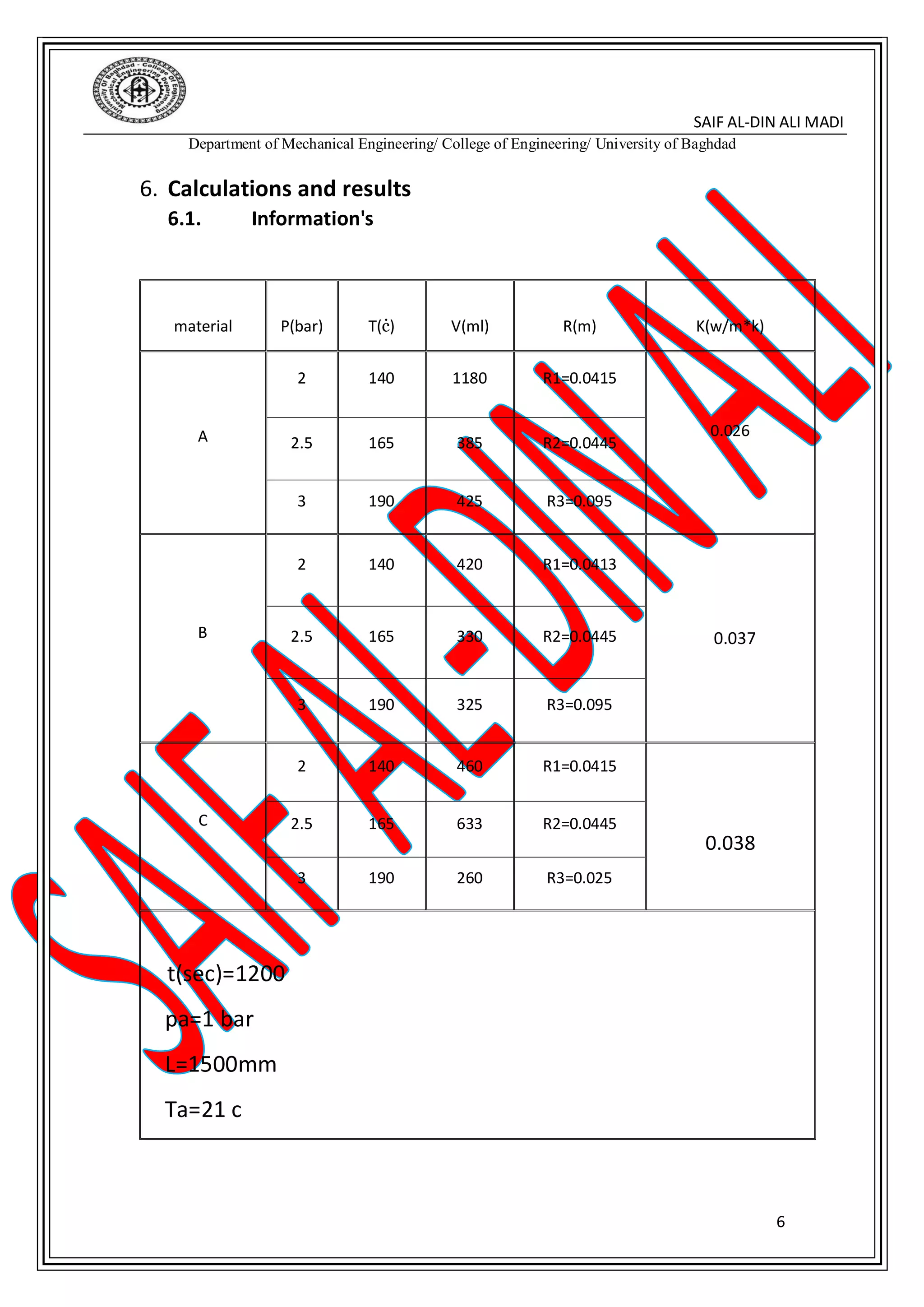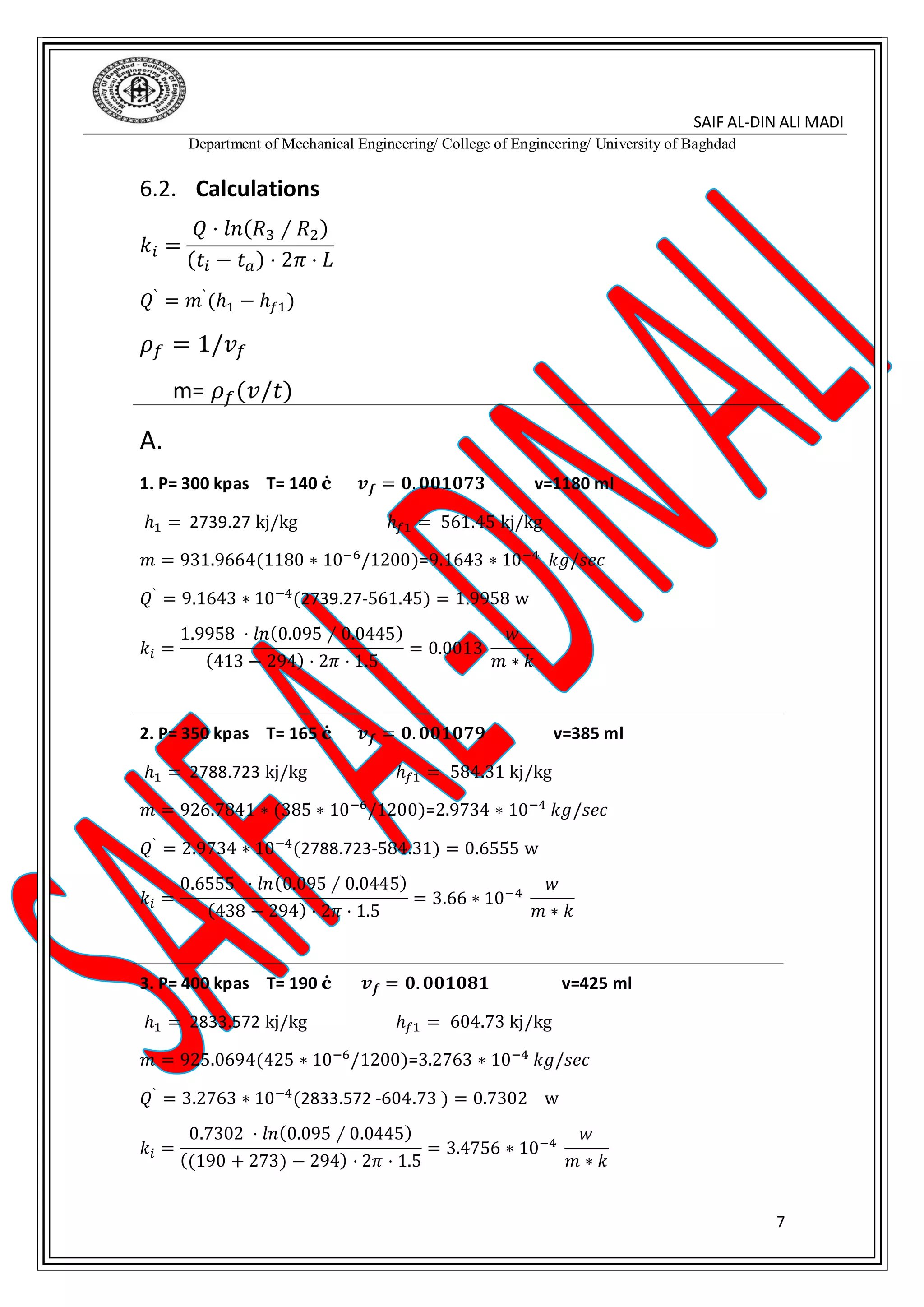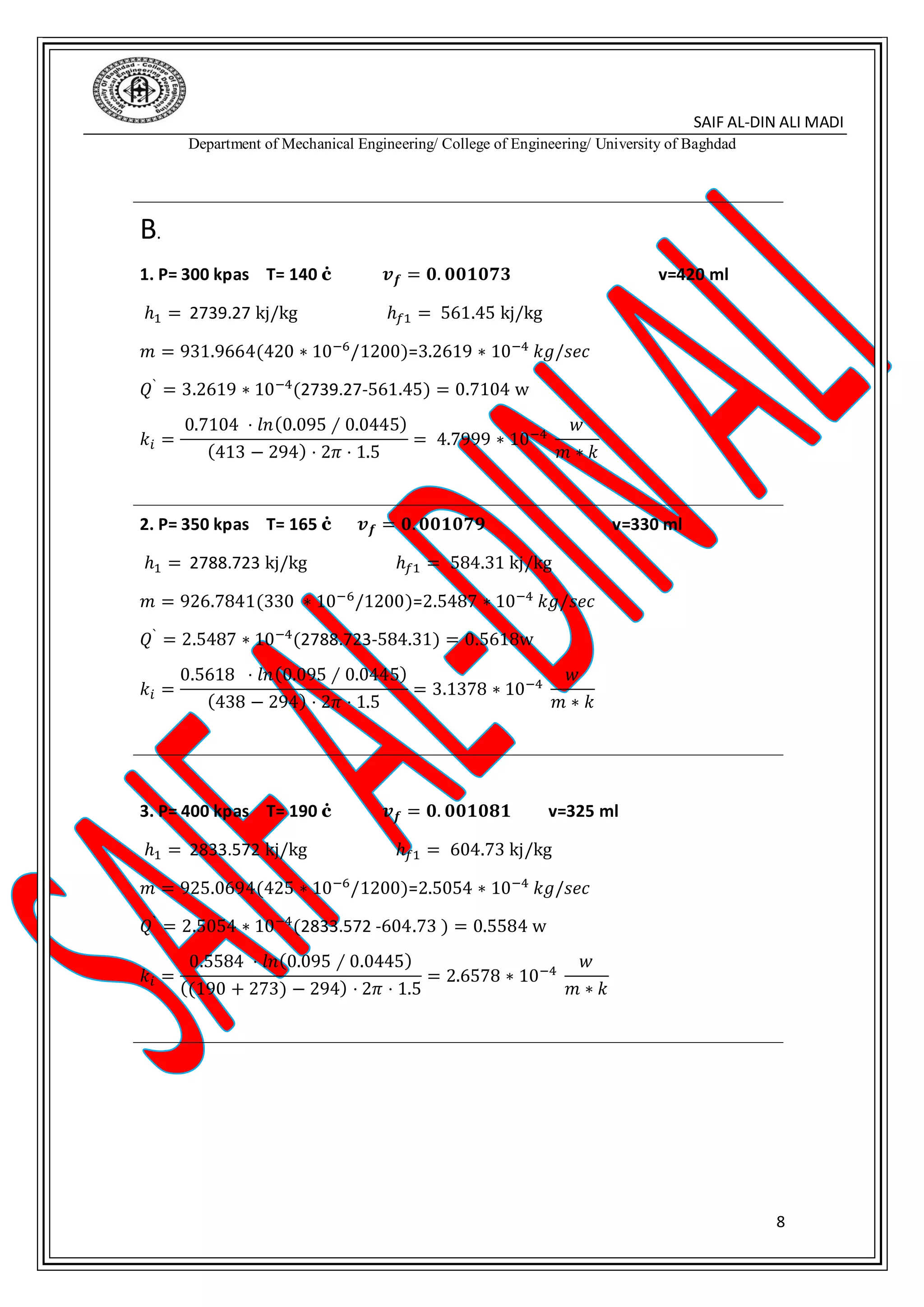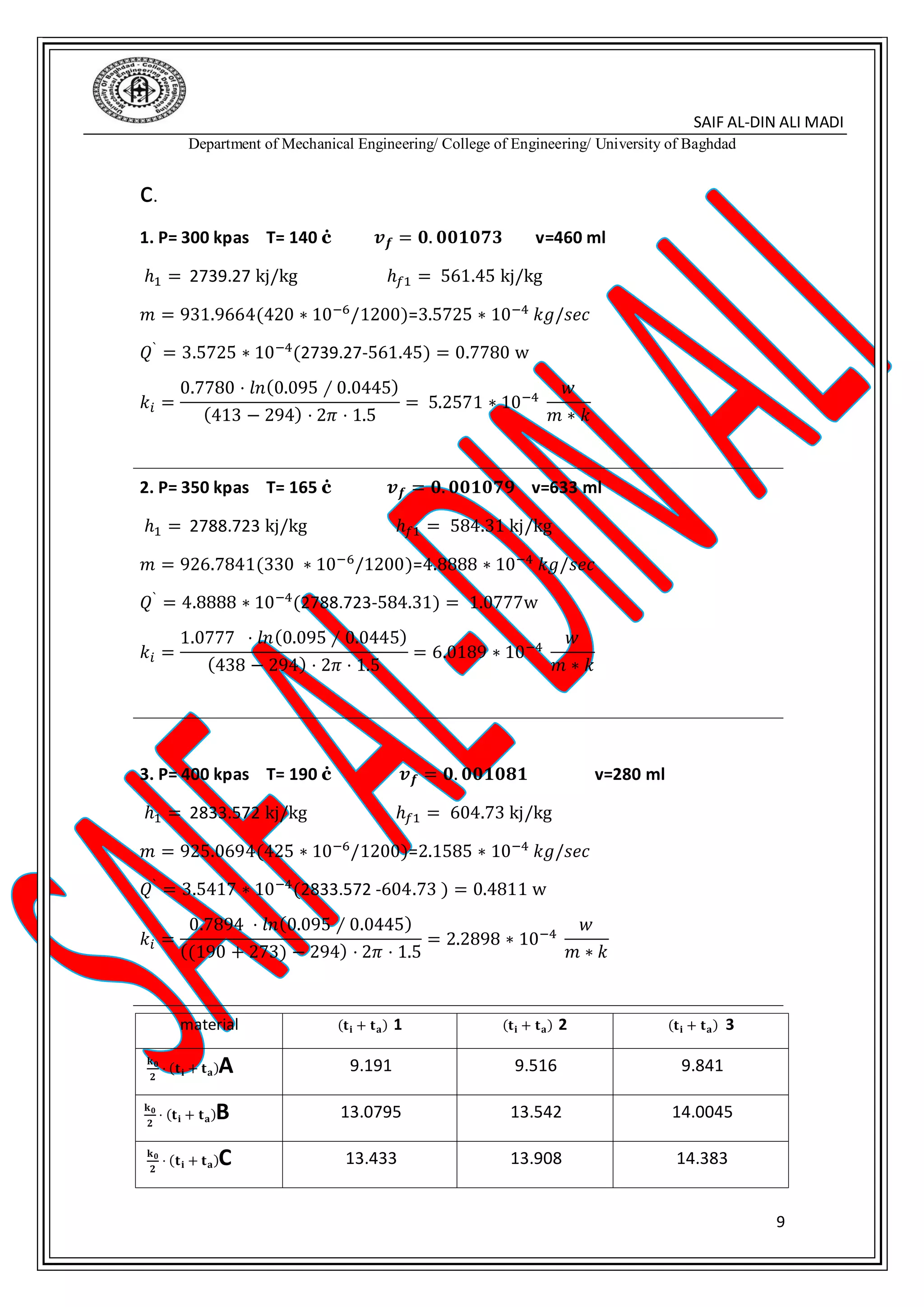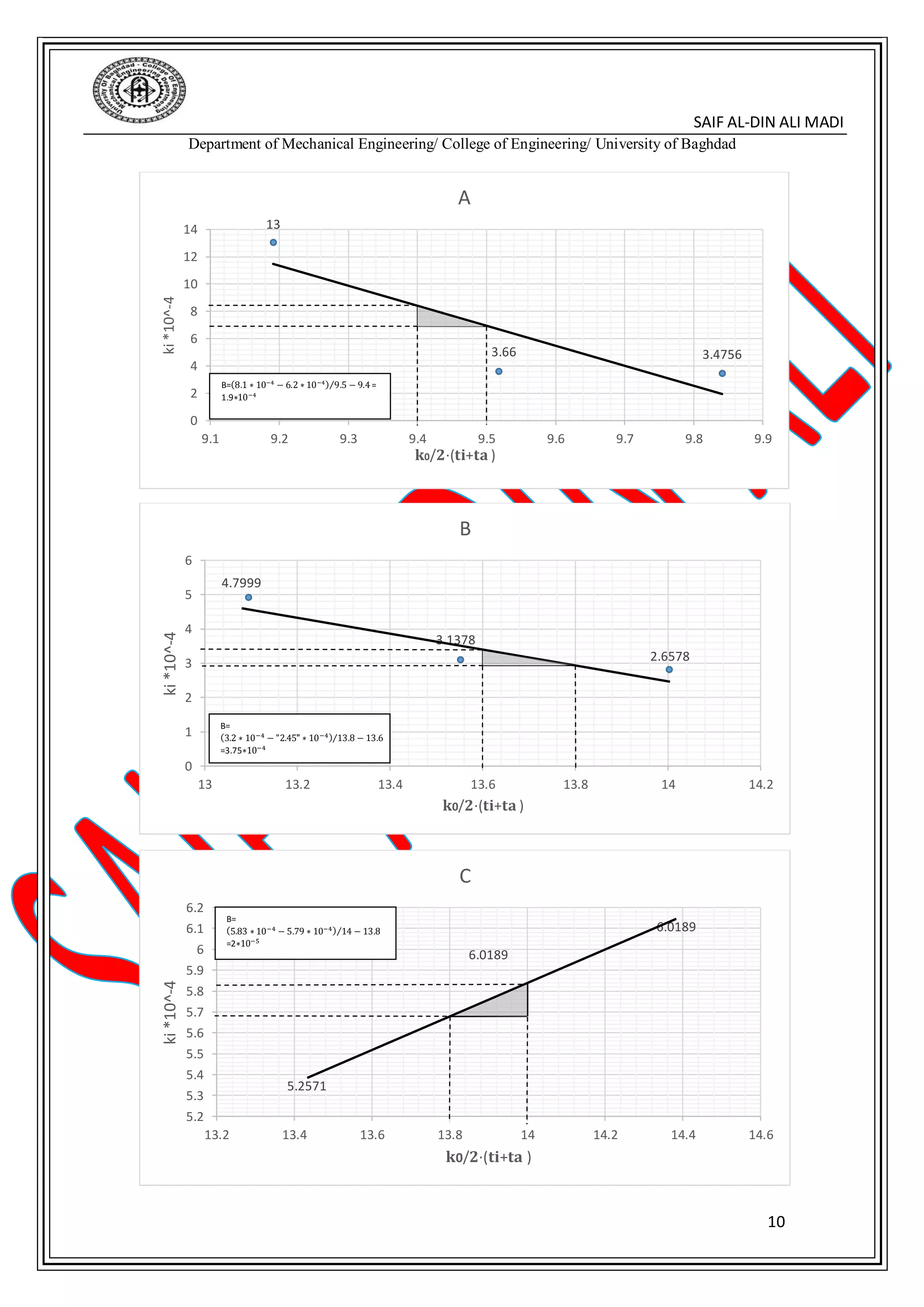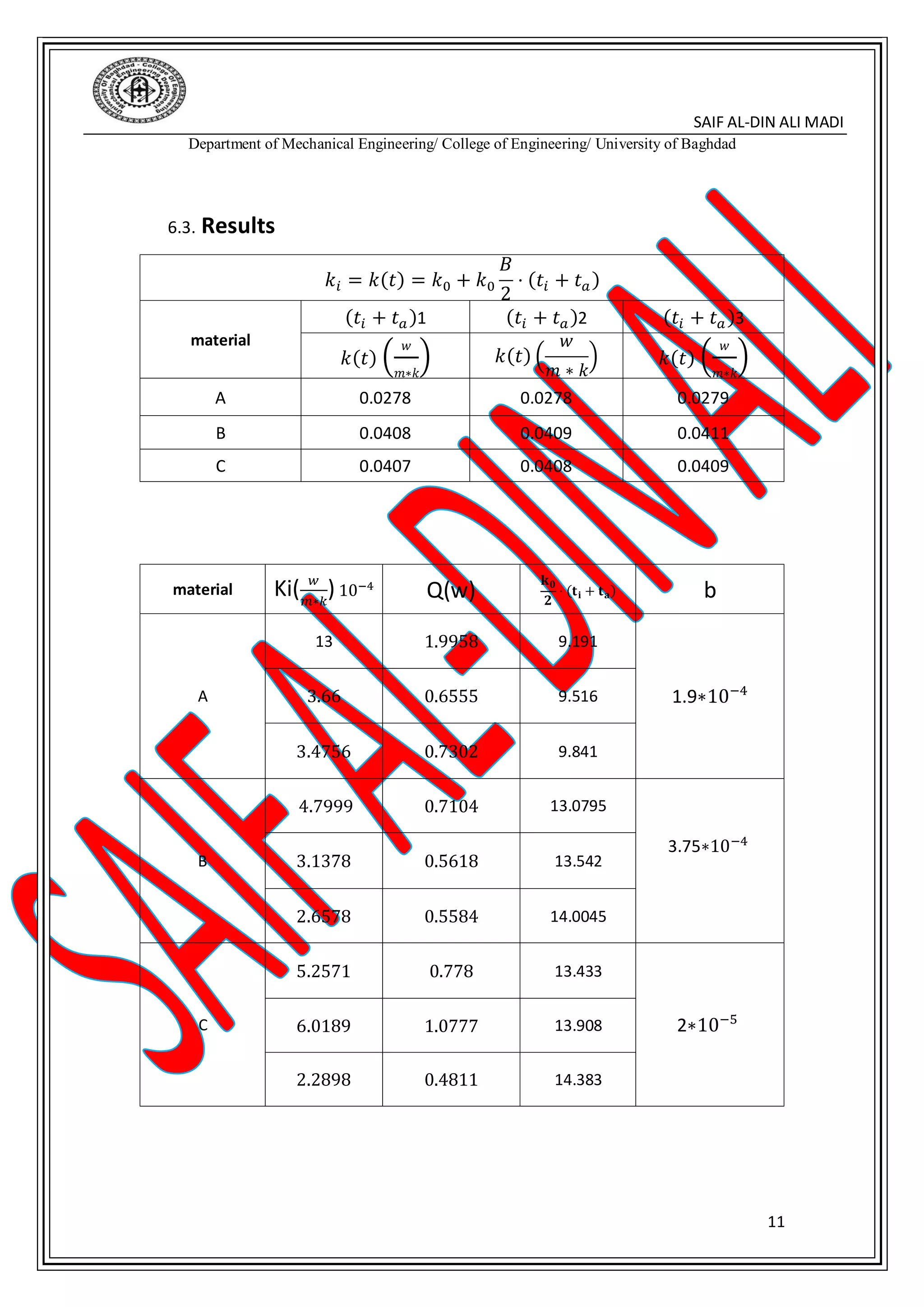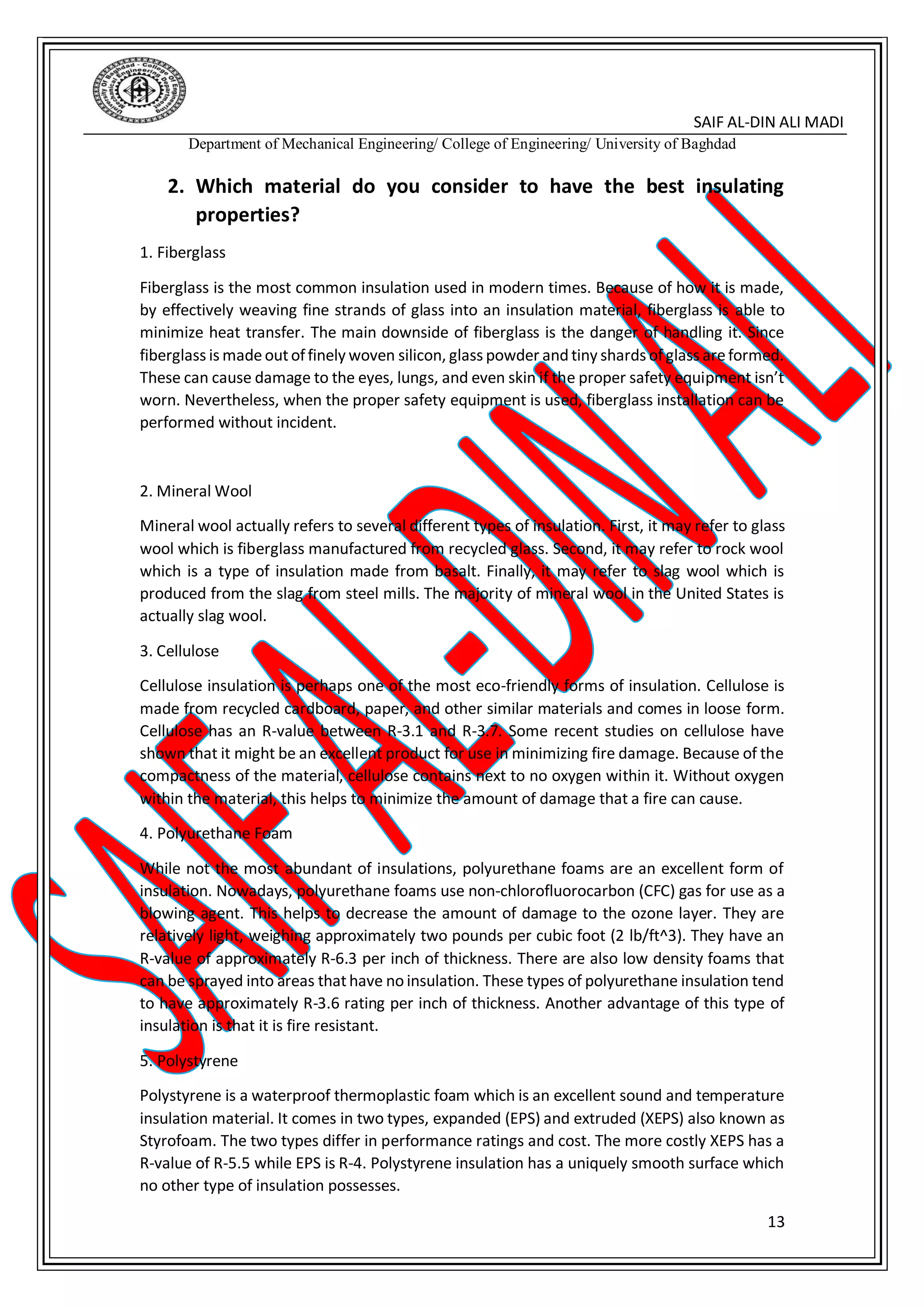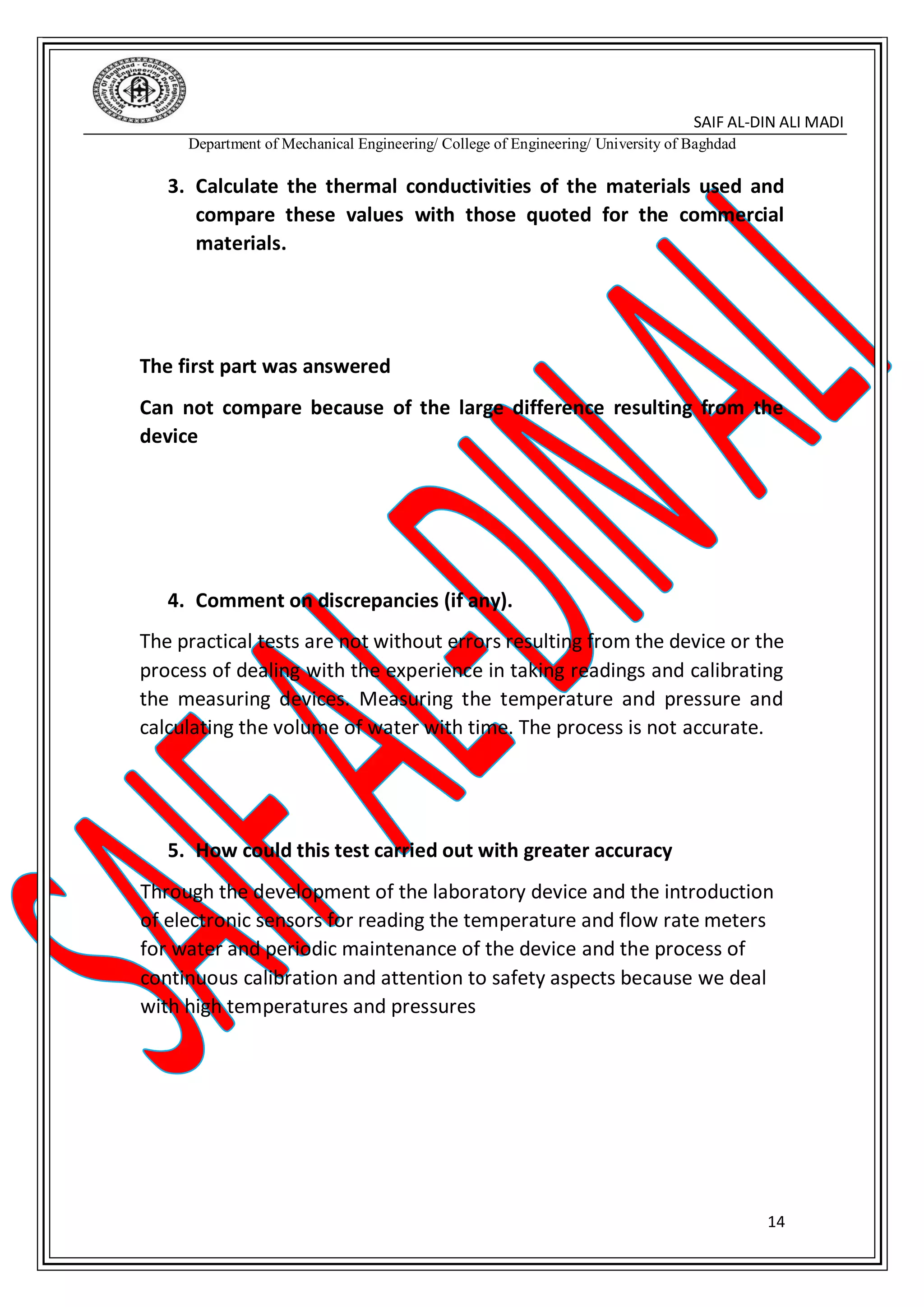The document describes an experiment to study the efficiency of pipe insulation. Steam is passed through four vertical pipes - three covered with different insulating materials and one uncovered. The amount of condensate collected from each pipe is measured to calculate the heat lost and determine the thermal conductivity of the insulating materials. Calculations are shown for the three insulated pipes using parameters like steam temperature and pressure, insulation thickness, and condensate mass. The thermal conductivity is found to vary with temperature for each material.
![SAIF AL-DIN ALI MADI
Department of Mechanical Engineering/ College of Engineering/ University of Baghdad
1
[HEAT TRANSFER Laboratory II]
University of Baghdad
Name: - Saif Al-din Ali -B-](https://image.slidesharecdn.com/pipeinsulationefficiencystudyunit-190703184949/75/Pipe-insulation-efficiency-study-unit-HEAT-TRANSFER-Laboratory-1-2048.jpg)
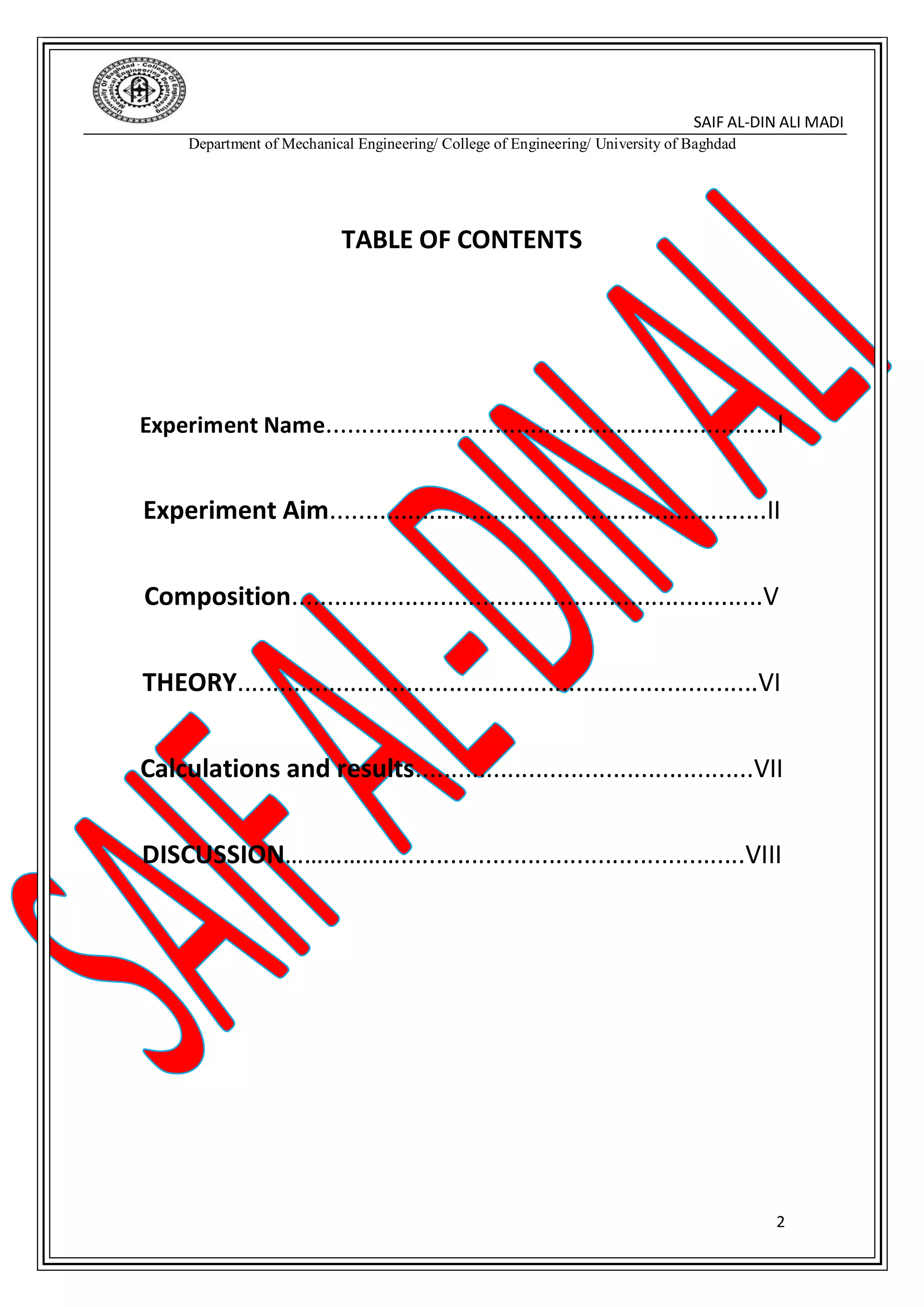
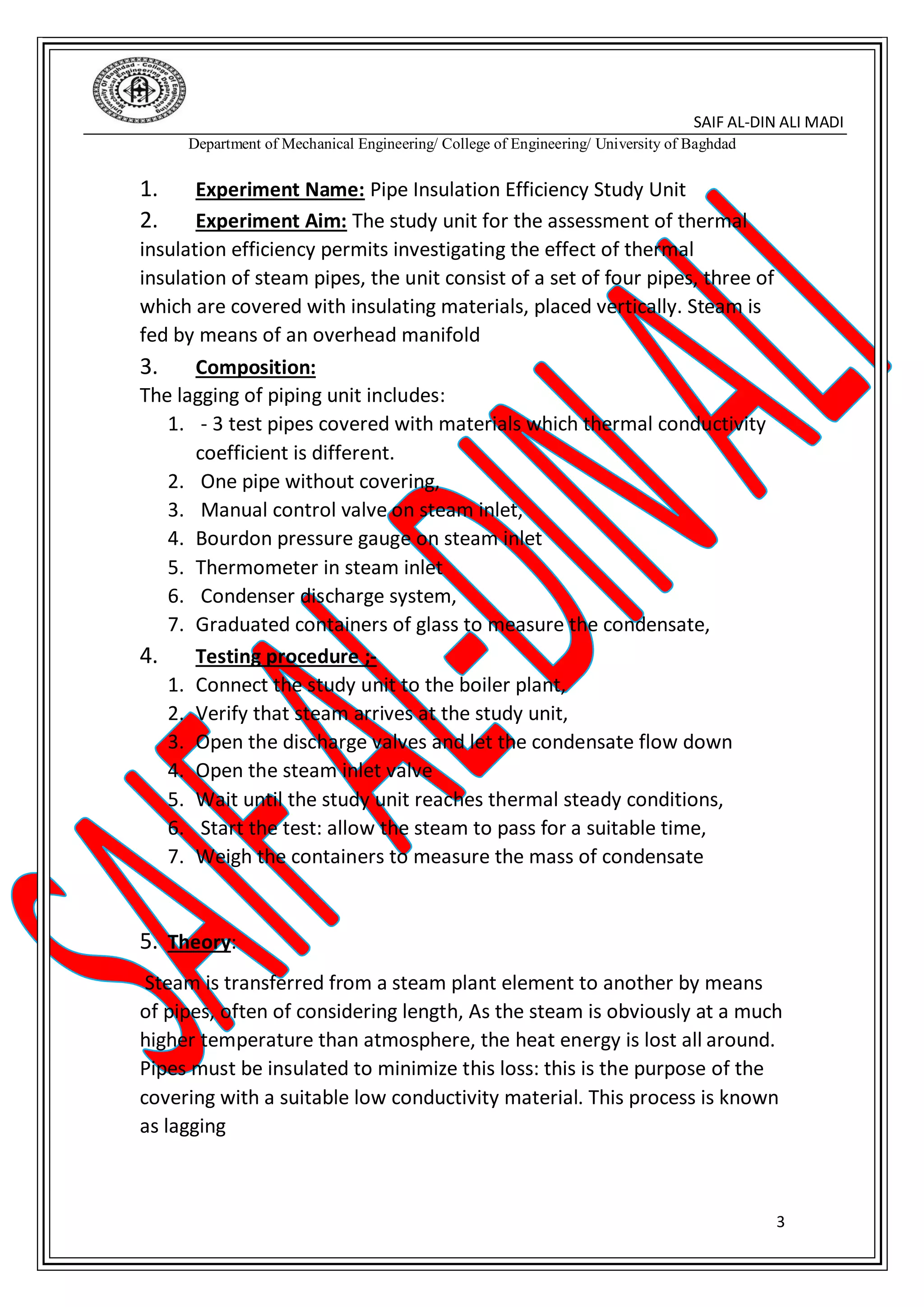
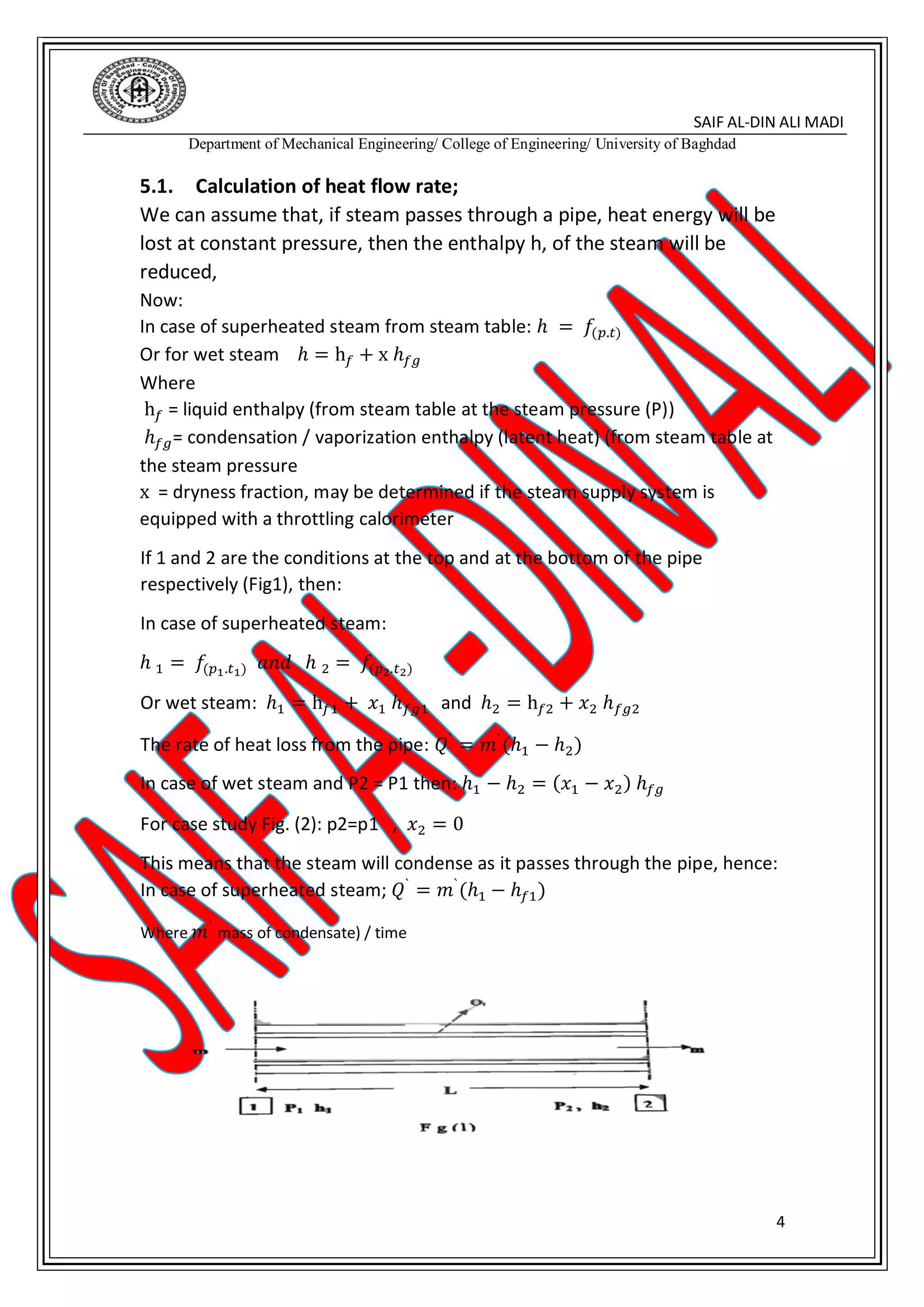
![SAIF AL-DIN ALI MADI
Department of Mechanical Engineering/ College of Engineering/ University of Baghdad
5
5.2. Calculation of thermal conductivity :
Heat is transferred by means of conduct through the lagging and by means of
convection from the outer surface, The rate of heat transfer is given by:
𝑄 = (
𝑡𝑖 + 𝑡 𝑎
𝑅 𝑡ℎ
)
Where :
𝑡𝑖 = steam temperature;
𝑡 𝑎= air temperature;
𝑅 𝑡ℎ = total thermal resistance which is given by:
𝑅𝑡ℎ =
𝐿𝑛(𝑅3 ∕ 𝑅2)
2𝜋 ∗ 𝑘𝑖 ∗ 𝐿
+
1
2𝜋 ∗ ℎ ∗ 𝑅2 ∗ 𝐿
+
𝐿𝑛(𝑅2 ∕ 𝑅1)
2𝜋 ∗ 𝑘 𝑝 ∗ 𝐿
Where:
R1: inner radius of pipe;
R2: inner radius of lagging;
R3: outer radius of lagging:
I: length of lagged section;
𝑘 𝑝; [thermal conductivity of pipe [W / m K];
𝑘𝑖: thermal conductivity of material [W / m K];
ℎ: surface heat transfer coefficient [W / m * K].
So we can get a good approximation by neglecting
1
2𝜋∗ℎ∗𝑅2∗𝐿
+
𝐿𝑛(𝑅2∕𝑅1)
2𝜋∗𝑘 𝑝∗𝐿
Thus
(𝑡 𝑖−𝑡 𝑎)⋅2𝜋⋅𝑘𝑖⋅𝐿
𝑙𝑛(𝑅3∕𝑅2)
≡ 𝑄 = 𝑚′(ℎ1 − ℎ2)
Then we can obtain thermal conductivity:
𝑘𝑖 =
𝑄 ⋅ 𝑙𝑛(𝑅3 ∕ 𝑅2)
(𝑡𝑖 − 𝑡 𝑎) ⋅ 2𝜋 ⋅ 𝐿
This thermal conductivity varies linearly with temperature because of the high temperature, The
variation of thermal conductivity with temperature is taken as:
𝑘𝑖 = 𝑘(𝑡) = 𝑘0 + 𝑘0
𝐵
2
⋅ (𝑡𝑖 + 𝑡 𝑎)
Where: 𝒌 𝟎: thermal conductivity at reference temperature taken from the apparatus)
b: constant](https://image.slidesharecdn.com/pipeinsulationefficiencystudyunit-190703184949/75/Pipe-insulation-efficiency-study-unit-HEAT-TRANSFER-Laboratory-5-2048.jpg)
